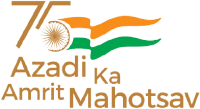In this talk, I will present results from the ongoing Chandra Non-nuclear Source Characterisation (CNSC) survey, as part of the continued LeMMING legacy survey for nearby AGN, using the most sensitive X-ray (Chandra) telescope and the radio telescope array, e-MERLIN, UK, simultaneously. Our survey encompasses all off-nuclear X-ray sources observed in 211 LeMMINGs galaxy fields using Advanced CCD Imaging Spectrometer (ACIS), which provides a comprehensive collection of detailed X-ray spectral and temporal properties, as well as corresponding optical counterparts. With stringent source selection criteria, our CNSC comprises a total of 1388 off-nuclear X-ray sources that were not studied, and their nature has yet to be identified in detail before. For each individual source, we provide detailed characteristics such as the long-term (> 10 years) X-ray light curve, the evolution of X-ray hardness, and the evolution of best-fit spectral parameters for different sources. We have identified several supernova remnants with high and low-mass X-ray binaries in our sample. While the classification is still preliminary and requires multiwavelength coverage in optical and infrared, the CNSC represents a significant advancement in understanding the nature of off-nuclear X-ray sources in nearby Galaxies.
Dr Mayukh Pahari has been working as an assistant professor at the Department of Physics, Indian Institute of Technology, Hyderabad, since 2021. After finishing his PhD from TIFR Mumbai in 2015 (thesis submitted to Pt Ravishankar Shukla University, Raipur), he joined as a postdoctoral fellow at IUCAA, Pune. Later, he received the prestigious Newton International Fellowship, awarded by the Royal Society UK, and moved to the Department of Astronomy at the University of Southampton in the UK for his post-doctoral research on reverberation mapping of Active Galactic Nuclei. His primary research focus is using multi-wavelength astronomical observations to understand the radiation geometry and mechanism around accreting compact objects, particularly black holes. During his final year of PhD and the first couple of years of postdocs, he was engaged in the ground and on-board calibration of the Large Area X-ray Proportional Counter onboard AstroSat mission as an instrument team member. He is also currently working as a team member of the International Chandra and E-Merlin Legacy Survey of Nearby Galaxies and SmartNet by ESO and Canada Collaborations.

